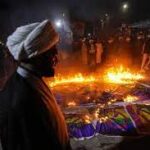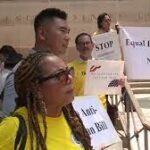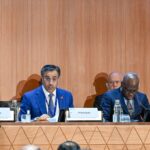Aboard a 1938 flight from London to Australia :-: CNN

(CNN) — Flying to the other side of the world used to be such a romantic adventure, but the 10-day upper-class epics of yesteryear will soon be reduced to a 15-hour nonstop dash.
Instead of a multi-stage marathon on a luxury flying boat, the first direct flights from the UK to Perth, Australia will take off in March 2018, operated by Qantas Airways,
The high-tech Boeing 787 Dreamliner, which Qantas is due to take delivery of on October 17, represents the final link in the chain for the great aviation adventure which has rendered the world a smaller place.
Just how much it's changed in the past 80 years is evident in our gallery of images, supplied by AirlineRatings.com and Qantas. "That experience, cocooned in what is arguably one of today's ultimate flying machines, is a stark contrast to the marathon journey in 1938 when it took 37 stops over 10 days," says Geoffrey Thomas, editor-in-chief of AirlineRatings.
"The return fare was about £400 — the equivalent of two years' minimum wages, making the journey very much one reserved for the rich and famous."
'Aerial pioneers'
Luxury flying boats came with a promenade deck.
Courtesy Qantas — colorized by Benoit Vienne
Those early journeys from the were flown in two parts, beginning with a lengthy trip from the English port of Southampton to the northern Australian town of Darwin in a then state-of-the-art Short C Class flying boat that could carry 15 people.
Despite the romantic image of a luxury flying boat, complete with smoking cabin, promenade deck and space for quoits and golf, the reality was often very different.
"Operating at 10,000 feet flying through tropics was often a nasty affair with severe turbulence and no weather radar to help pilots in those days," says Thomas.
However, the hospitality and in-flight service were first class, with stewards described as "aerial pioneers of personal care and service," according to Frank Gunn's book The Defeat of Distance.
"Meals were sumptuous," he writes. "Grapefruit and cereals, egg and bacon, bread rolls with tea, coffee, or cocoa for breakfast; then later, roast mutton with peas and potatoes, or a choice of ham, pressed beef, or ox tongue with salad, followed by Peach Melba, a cherry flan, or cheese and fruit."
The last part of the journey from Darwin to Perth on Australia's west coast was flown by local airline MacRobertson Miller Airlines in 6-10 passenger De Havilland DH-84s and later the DH-86.
With no night flying, passengers stayed in the most luxurious hotels available down route, although in Western Australia the accommodation was basic at best.
'Quantum leap'
Qantas's first Boeing 787 will launch non-stop flights between the UK and Australia in March, 2018
Courtesy Qantas
The flying boats were superseded by converted Lancaster bombers before Qantas and British Airways ordered pressurized four-engine Lockheed Constellations, which were a "quantum leap forward," according to Thomas.
This "Kangaroo Route" introduced tourist or economy class in 1954 and within two years it accounted for 44% of passengers.
Later, the faster, longer-range Super Constellations cut the four-day traveling time to Australia to a little over 54 hours.
For the jet age, British Airways (then BOAC) ordered Comets, Boeing 707s and VC-10s, while Qantas opted for the Boeing 707.
The more powerful turbofan jet engines introduced in the early 60s also enabled greater range so stopovers such as Darwin could be dropped.
“Operating at 10,000 feet flying through tropics was often a nasty affair with severe turbulence and no weather radar.”
Geoffrey Thomas, editor in chief, AirlineRatings.com
"Jets were able to fly much higher — up to 40,000 feet — and thus could avoid the worst of the weather. And with the smoother flights came the many publicity shots of children building houses out of cards or matchsticks to highlight the lack of bumps or vibrations," says Thomas.
At the start of the jumbo era two stops were still required, but with the advent of the 747-400 and its more powerful and economical engines in 1989, one-stop flights became the norm.
Now, the Dreamliner will go all the way in one go.
"While aircraft such as Boeing's 777-200LR has been able to operate non-stop over similar and even greater distances it is the economy of the latest generation of aircraft such as the Boeing's 787-9 and the Airbus A350 that makes these routes viable," says Thomas.
"The carbon fiber construction of these latest generation of aircraft (787 and A350) allows for lower cabin altitude and higher humidity which virtually eliminate the worst impacts of jet lag — making longer nonstop journeys almost a breeze.
"And rather than two years wages, a return economy seat on the 787 non-stop service down under will cost about one-and-a-half weeks of average salary for a UK resident."
From 10 days to 15 hours. It's a small world.
Original Article

















